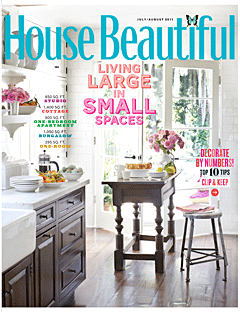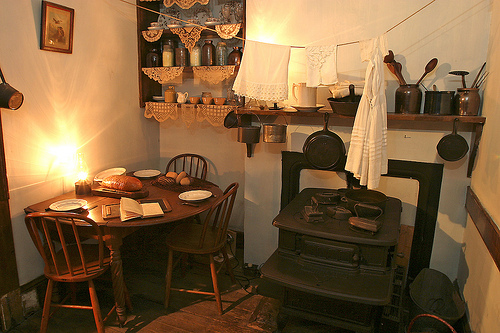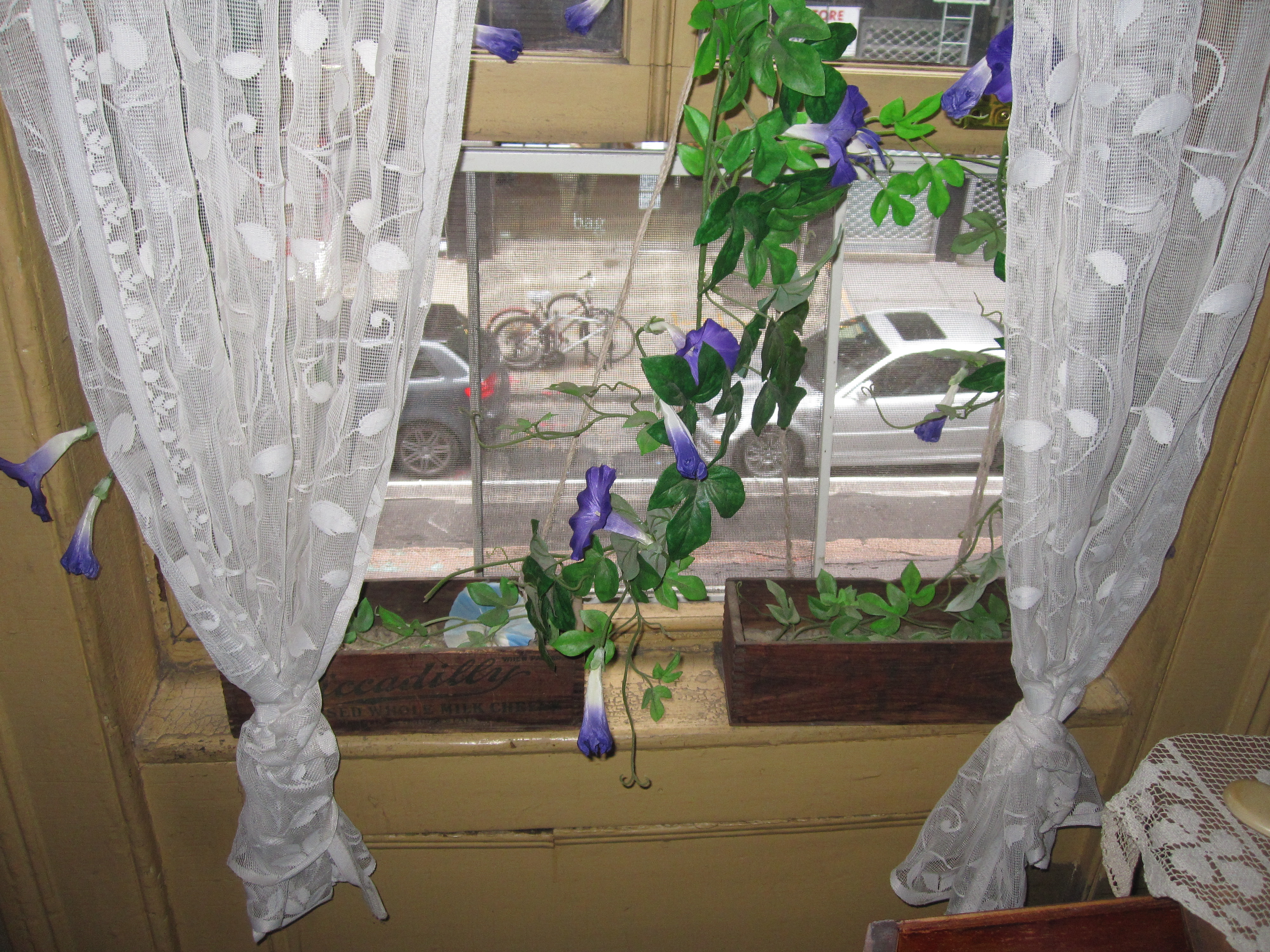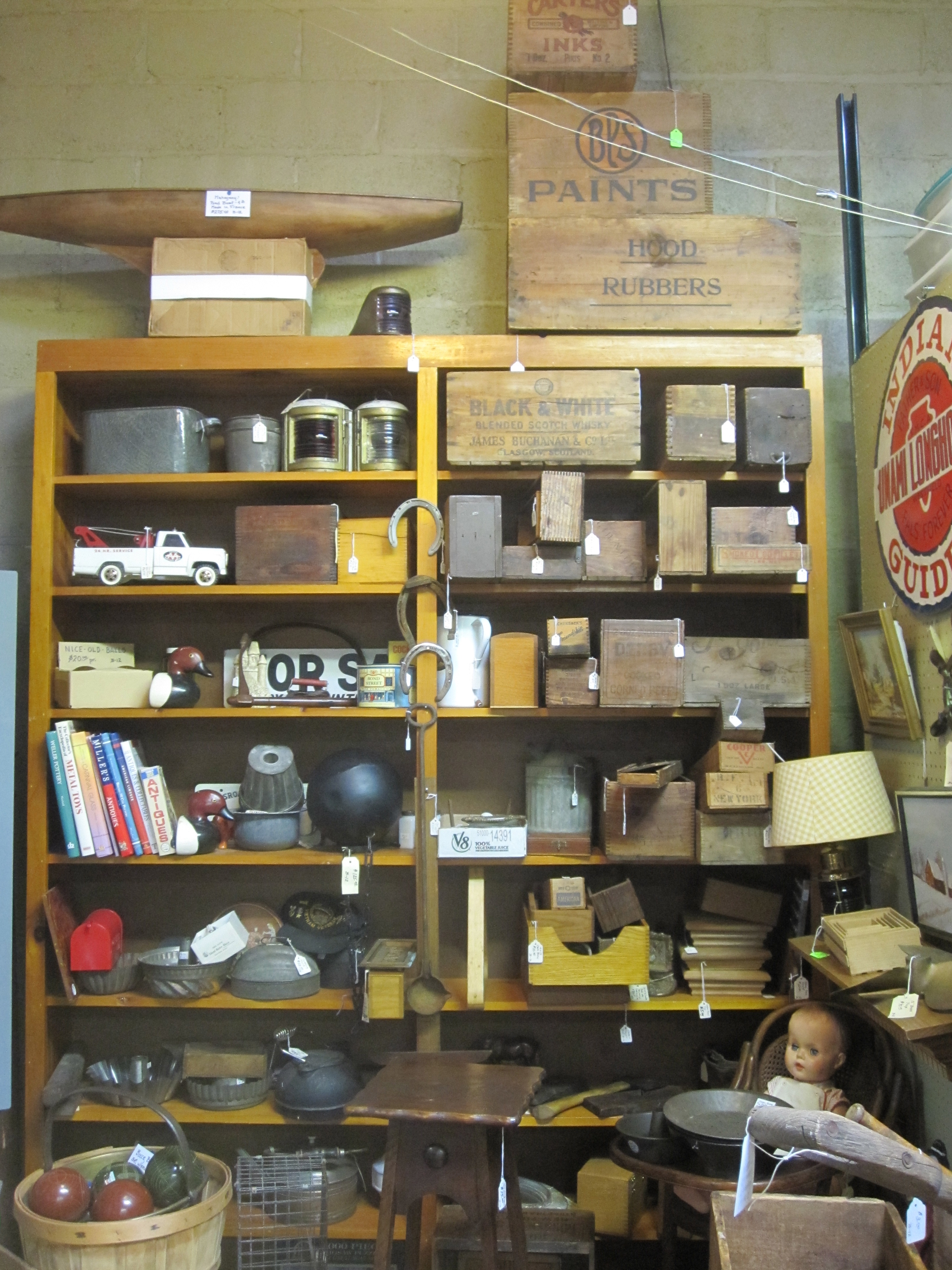 The current issue of House Beautiful proclaims the charm of “Living Large in Small Spaces.” Apartments and houses ranging from a 295 square foot studio to a 1400 square foot cottage grace the pages, all ingeniously designed. This tends to be a semi-annual issue and I always devour it, as I am the queen of small spaces. Living in NYC, Tokyo and an 1880s beach cottage will do that to you. As a result, I find efficiently used tiny spaces to be some of my absolute favorites. Stop by their website and take a video tour of the smallest space, freshly designed by Nick Olsen.
The current issue of House Beautiful proclaims the charm of “Living Large in Small Spaces.” Apartments and houses ranging from a 295 square foot studio to a 1400 square foot cottage grace the pages, all ingeniously designed. This tends to be a semi-annual issue and I always devour it, as I am the queen of small spaces. Living in NYC, Tokyo and an 1880s beach cottage will do that to you. As a result, I find efficiently used tiny spaces to be some of my absolute favorites. Stop by their website and take a video tour of the smallest space, freshly designed by Nick Olsen.
This past weekend I visited some very small apartments in person and found them utterly fascinating. The Tenement Museum of New York, housed at 97 Orchard Street on the Lower East Side, is a living testament to the history of immigrant families in NYC. According to our tour guide and their website, within #97, its 20 three-room apartments, typical of their kinds, were arranged four to a floor, two in front and two in the rear. They were reached by an unlighted, ventilated wooden staircase that ran through the center of the building. The largest room (11′ x 12’6″) was referred to in plans as the living room or parlor, but residents called it the “front room.” Behind it came the kitchen and one tiny bedroom. The entire flat, which often contained households of seven or more people, totaled about 325 square feet. House Beautiful has an article on idealized spaces under 1000 square feet, including Sausalito boathouses and Cape Cod dune shacks, but nowhere do they mention tenements…
So I know visitors are supposed to be aghast at the tenement conditions – miniscule spaces with windows only in the front room and no bathrooms or indoor plumbing – but typically, I found it all kind of charming. This kitchen, belonging to Natalie Gumpertz and styled to 1878, was adorable to look at. Realistically, it would have been dark, with scary night visits to the outhouses in the backyard and all water lugged up from an exterior pump.
Across the hall, the mirror image apartment was restored and refurbished to look as it did in 1935 when the Baldizzi family lived there. Adolfo Baldizzi was a skilled cabinetmaker, out of work for much of the time they lived in the apartment, so he made improvements, like the built-in china cabinet. I’d like him to come and build me kitchen cabinets like that one! Other improvements by 1935 include running water, a toilet in the hall and interior windows.
What looks like counter to the right of the sink in the photo above is actually the bathtub with a removable cover. In addition to layers of paint and peeling linoleum, that is the quintessential mark of a tenement to me. Remember the scene in Married to the Mob when Michelle Pfieffer walks up to her new apartment, “the only thing she can afford”? The bathtub is smack center in the middle of the kitchen. I think the location scout did a particularly good job with this one.
Luckily the museum was able to find and interview Josephine Baldizzi, who lived in the apartment at 97 Orchard Street as a child. She recounts how her parents never lowered their standards and kept everything clean and tidy. “Her parents made the apartment as comfortable as possible, with lacy curtains, fabric drapings everywhere, pretty bedcovers, tablecloths, built-in shelving and trim, etc.” The urge to prettify and improve ones surroundings and living condition is universal and at the heart of why I and many others like me, blog.
Nonetheless, with Adolfo out of work and her mother Rosario only able to pick up small wages here and there, the family needed to get on to NYS Governor Franklin Delano Roosevelt’s new Home Relief program which provide{d} for needy families, domiciled attached men and women, and homeless men and women. More on the Home Relief program here.
One of the most common goods provided through home relief was government-issued cheese, which came in small wooden boxes. Josephine remembers that her father used the empty boxes to plant morning glories, making something beautiful out of a symbol of hard times. Children also used the boxes to store marbles, toys, or other treasures.
In taking Josephine’s oral history, she said she never ate cream cheese again.
The cream cheese boxes really caught my attention because I had been wondering why I was seeing so many of them at different antique stores all over the tri-state area. Did people really eat so much cream cheese? Turns out they did! Shore Antiques Center near my house is full of vintage food and sundry boxes, but the cream cheese ones tend to be particularly prevalent.
I had recently bought one and am using it to hold teabags although I can imagine 101 uses for it. Loving the morning glories idea too!
Conditions in the apartments at the Tenement Museum are perhaps a little glorified, but one thing that wasn’t was the lack of air conditioning. On an almost 100 degree day, we were as hot as the residents 100 years ago would have been. In general, I have been hot this summer. Not only because of the soaring temperatures outside, but because I haven’t really been running the air conditioning. I think subconsciously I am trying to show my solidarity with Japan. Even with “super cool biz” and all, everyone I know over there is struggling to deal with the heat this summer.
Image credits: 1. House Beautiful, July 2011, 2-3 & 5. via The Tenement Museum flickr photostream, 4. Married to the Mob, directed by Jonathan Demme, 5-7. me.







